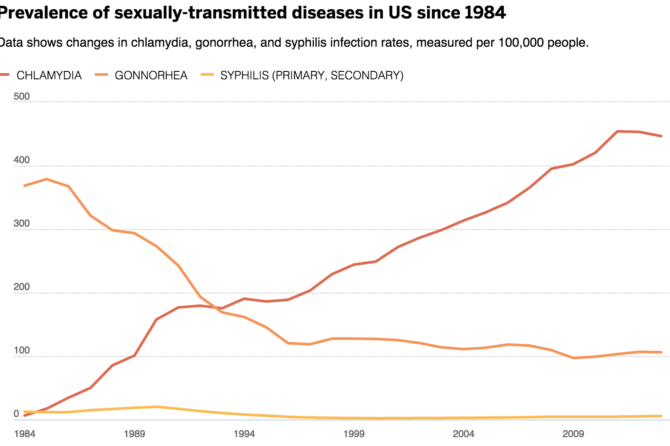
R.I. officials say dating apps contributing to rise in STDs
Officials believe online dating services and apps that lead to casual romantic encounters are at least partially to blame for an increase in sexually transmitted diseases in Rhode Island, putting the state in the midst of an emerging debate over how the technology affects public health.
With rates of syphilis, gonorrhea, and chlamydia at a 10-year high in Rhode Island, public health workers there say they are alarmed by accounts from health care providers who say their infected patients “met their partners through online websites and geo-locating apps.”
If you’re currently using or planning to use a dating app like “Tinder” or “Grinder” – make sure you regularly get tested to ensure you are free from STDs.
Though the state health department does not have firm data on how many people contracted the disease through such an encounter, officials say they are confident digital encounters are playing a role in the recent rise.
“We do not know how much social media has contributed to the rise in STDs, but we believe it is a contributing factor,” the Rhode Island health department said in a statement to the Globe.
Recent studies from across the country have linked the proliferation of Web-initiated dating and sexual hookups to growth in STD rates, and health officials in at least one other state, Utah, have voiced similar worries.
But other health officials say it’s far from certain that online daters take more risks, and historical nationwide data show that STD prevalence spiked before online dating, and has fluctuated declined since its inception.
Kevin Cranston, director of the Massachusetts Department of Public Health’s Bureau of Infectious Diseases, said officials here, where rates of some STDs have risen in recent years, have not seen conclusive data that link rises in STD rates to use of dating apps…
Read the whole story in the Boston Globe
Leave a reply